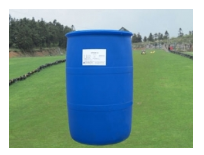Alkyl polyglucoside surfactants can form hydrophobic groups on the surface of the fiber and reverse adsorption outwards, so as to reduce the dynamic and static friction coefficient of the fiber material, so as to obtain a smooth and soft handle. Generally, surfactants and finishes are always used together. Surfactants can effectively reduce the static friction coefficient of fiber materials, while finishes can reduce the dynamic friction coefficient of fiber materials. The effect of soft lubrication can be expressed by the difference between static friction coefficient and dynamic friction coefficient. The smaller the difference is, the stronger the soft lubrication is.

Different types of softeners are used on different types of fiber surfaces. The surface of paper fiber is negatively charged, so the effect of cationic or zwitterionic surfactant is much better. In addition to surfactants, organosilicon polymer or lanolin should be added in the formulation of softener and smoother to reduce the surface energy of fiber.
Surfactants are special structural molecules with hydrophilic and lipophilic groups, so they have a series of application functions, and are widely used in various fields of plastic industry as additives.
Application of surfactant in plastic antistatic agent plastic is a kind of polymer material with good electrical insulation performance. However, when plastic is used as insulation material, its surface is easy to friction and generate static electricity, which will lead to fire, explosion, electric shock and other accidents. The static electricity can be effectively eliminated by adding surfactant as antistatic agent in plastics.
Antistatic agents can be divided into external coating and internal mixing. Its action mechanism mainly has two aspects: one is that the lipophilic group of the surfactant combines with the resin, the hydrophilic group forms a conductive layer on the plastic surface or combines with the moisture in the air through hydrogen bond, so as to reduce the surface resistance and accelerate the leakage of static charge; the other is to give the plastic surface a certain degree of lubricity, reduce the friction coefficient, so as to inhibit and reduce the generation of electric charge. The common antistatic agents for plastics are: nonionic, cationic, anionic and mixed.